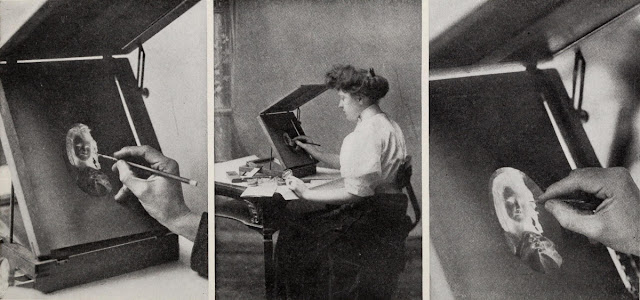“Photoshopping” portraits have been around a lot earlier! Over a century ago, photographers were already altering images to satisfy demands of customers in the Victoria era. Their retouching tools include an easel, magnifying glass, lead holder, lead, spotting brush, retouching fluid, negative varnish, and etching paste. Pencils were used to remove imperfections and blend highlights, shadows, and halftones, while etching knives were used to reduce highlights and remove photo parts.
An instructional book published in 1908 shows examples of photo retouching dating all the way back to the early 20th century.
“Complete Self-instructing Library of Practical Photography” is a 10-volume collection of black and white books. It gives instructions to photographers on how to shoot, retouch, and 'eliminate imperfections’ on their subjects.
The book says, “in delivering finished work to your customers, you do not hand them the photographic negatives, but the prints made from these negatives.” And that “the early days of photography prints were made directly from the negative without any alteration.”
This is because “the wet-plate rendered softer effects than are obtainable with the ready prepared dry-plate.” Therefore, “the imperfections were less visible, and at that time the general public was satisfied with an exact likeness of themselves.”
However, when the dry-plate began replacing the wet-plate, photographs became more accurate, and “the defects in the human face became more apparent on the negative, and there arose a demand for a greater softening of the lines and a removal of the more objectionable imperfections.”
That’s when retouching became a thing! Here are some examples portrayed in the book regarding the removal of imperfections from photography subjects during the early 20th century.

























0 comments:
Post a Comment